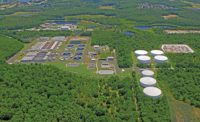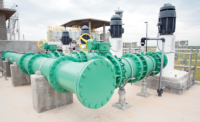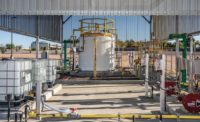Oak Harbor Clean Water Facility
Oak Harbor, Wash.
Best Project
Owner: City of Oak Harbor
Lead Design Firm/Structural/Civil/MEP Engineer: Carollo Engineers
General Contractor: Hoffman Construction Co.
Architect: MWA Architects
Landscape Architect: Greenworks
Subcontractors: David Evans Associates; GeoTest Services; Equinox Research & Consulting International Inc.; EnviroIssues; GeoEngineers; Cosmopolitan Marine Engineering; Webster Environmental Associates Inc.; Environmental Science Associates; Interface Engineering; WRK Engineers; Vestas-American Wind Energy Inc.
The $128-million project provides an innovative approach for integrating economic development, recreational uses and wastewater treatment into an urban environment. Combining a variety of advanced treatment systems within a compact footprint, the facility improves water quality while also enhancing a surrounding waterfront park. The architectural design is expected to help lure new businesses to Oak Harbor’s downtown corridor.
Integral to building the state-of-the-art facility was respect for a culturally rich location where humans have lived for more than 2,000 years. To avoid inadvertent archaeological discoveries that could have created costly delays and facility redesign, the project team phased its excavation to facilitate exploration of high-risk areas without affecting the schedule’s critical path. When crews encountered an artifact, the flexible construction sequences allowed surrounding work to continue until a remediation strategy was determined. The protocols proved valuable during construction as the team encountered human remains and other significant findings.
To accelerate construction, the team developed segmented early work packages while detailed design was ongoing. Starting site preparation, utility relocation and early foundation construction before 50% design completion helped trim the schedule by more than 18 months. Coordination with treatment technology manufacturers ensured timely delivery of equipment.
Retiring and replacing the existing marine outfall line required the project team to transition work activities to barges during high tides. A strategically positioned tower crane provided overhead access to all buildings across the 3.5-acre site.
Crews took care to safeguard habitats for a variety of federally listed fish species. Improvements to nearby wetlands greatly reduced regular flooding in the low-lying coastal area, while a new splash pad at the park provides a popular public amenity. Despite the many site and logistical complexities, the four-year project was completed ahead of schedule and below budget.






Post a comment to this article
Report Abusive Comment